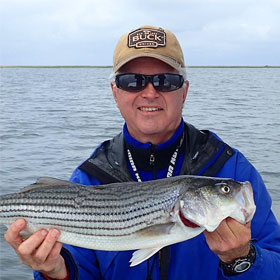New Year Boating Resolutions: Master Your Sonar & GPS
By Ken Schultz
Jan 12, 2024
Most boaters don’t have their sonar and GPS instruments fully mastered, so this should be top-of-list for new year boating resolutions.
Unless you’re a dedicated big-water angler or a long-range sailor/cruiser, chances are that you haven’t fully mastered the most important electronic instruments on your boat: the sonar and the GPS navigator. I know people who’ve had a new car for months before figuring out how to do some of the features their car was capable of. And that’s an item they use almost every day, unlike boaters who take their vessels out much less frequently and often have done little more than find out how to read bottom depth and turn the chart function on.
So, it makes sense that any new year boating resolutions should include mastering the sonar and GPS functions on your boat. This is especially true if you’ve just acquired a new boat or new electronics.

Do You Need It?
In case one of your new year boating resolutions is simply whether to acquire either a sonar or navigational device, let’s first address need. In a boat, it matters a great deal how deep the water is, what obstructions lay about, and where and how you should navigate. The larger the boat, the further you intend to go, and the more complicated the water you’ll be boating in, the more necessary it is to have both a sonar unit and a navigational unit (or one device that encompasses both functions).
What They Do
Sonar devices indicate water depth, bottom features, and fish location. They‘re often referred to as fish finders and can be pretty simple and comparatively inexpensive, or they can be highly sophisticated and very expensive. A navigational device indicates where you are, where you’re headed, and what navigational items of interest or concern may be located near you or near where you’re headed. They’re often referred to as a GPS unit or a chart recorder or chart plotter and range from moderate in price to very expensive depending on the level of technology and chart resources.

Tips for New Buyers
• A large screen is a big benefit for seeing details and history (sonar info scrolls), and for viewing from a slight distance away. Some devices today are the size of a small television, which is overkill unless you have a big boat or are a professional angler or charter captain. A 7- or 9-inch screen is fine for most of us.
• Consider a device that incorporates both sonar and navigation. The argument against this is that if that combo device malfunctions and needs repair, you have neither function, so it is better to have separate units for separate purposes and if one breaks down, the other is still operating. That increases costs significantly, takes up more space, and has twice the wires to run and twice the installation headaches. No thanks. I’ve used combo units for a couple of decades and don’t plan to change.

Mastering Their Use
Your boating goals for 2024 probably include getting out on the water more often, so here’s what I suggest with respect to electronics.
• Read the manual. I know, your electronics should be so user friendly that you can switch them on and get going, but there is always more that you can do - and quicker - if you digest the manual (which you may have to download).
• After you’ve familiarized yourself with the manual, bring it with you on the water and just use it and work with the device, preferably without trying to fish or go any place important. You’ll benefit from simply devoting time to learning the machine’s functions rather than trying to figure them out while on the go.
• If you’re strictly a pleasure boater, one of your boating resolutions for 2024 should be to focus especially on the chart functions. New technology allows for many helpful features that can be set up depending on your needs. For example, I have a new combo unit and one of the things I discovered while learning to use the chart was how I could assign different colors to represent different water depths. I made areas under 6 feet red, areas from 6 to 20 purple, 20 to 40 yellow, and over 40 blue. This gives me the ability to instantly recognize water depth ranges on the fly without having to closely check chart details. There are many more helpful things you can do, of course.
• If you’re an angler, one of your boating resolutions for 2024 should be to focus especially on sonar functionality. Many newer devices have down-imaging and side-imaging, as well as zoom and split screen functions. Some have forward facing sonar and some live-imaging. If you’re going to take advantage of the technology, you must spend time operating it and setting things up so that it’s second nature to use different features. Many anglers have been guilty of turning their sonar on, setting it to read bottom properly, and then never changing anything. Don’t fall into this trap, as modern sonar units have many capabilities that will help you find and catch fish.









